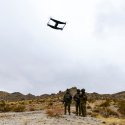Items related to:
Power Plus Attitude: Ideas, Strategy and Doctrine in the Royal Australian Air Force 1921-1991
Like any form of combat power, air power does not develop in isolation; nor is it static. Even
if there were no formal process linking its theoretical development and practical application
to other elements of national security, plainly it will remain responsive to a range of external
influences from the wider civil and military communities which combine to shape the
national security outlook.
AAP1000-H The Australian Experience of Air Power (2nd Edition)
SAASS Paper: Royal Australian Air Force 2025: A New Organizational Structure to Optimize Combat Effectiveness in an Era of Great Power Competition
The current RAAF organizational structure is top-heavy, unbalanced and too compartmentalized. This results in stove piped training, which inhibits high-end, networked and integrated joint collective training.
AAP1000-D The Air Power Manual
Airborne Early Warning and Control: A Piece of the Puzzle
Drone Swarms and their Potential within the Australian Defence Force
The onset of the war in Ukraine saw one of the most dramatic shifts in combined arms warfare since the introduction of the machine gun. This shift is attributed to the wide scale introduction of drones to the modern battlefield (Kagan et al, 2024). Principally the conflict is demonstrating drones pioneering new capabilities in reconnaissance, close air support and strategic strike with virtually zero risk to the operator.
Unmanned Air Mobility for the Australian Defence Force: Future Platforms, Partnerships and Challenges
Unmanned air mobility is a new concept for the Australian Defence Force. The rapid development of enhanced opportunities for air mobility in the joint force will be critical for supporting Australia's National Interests.







